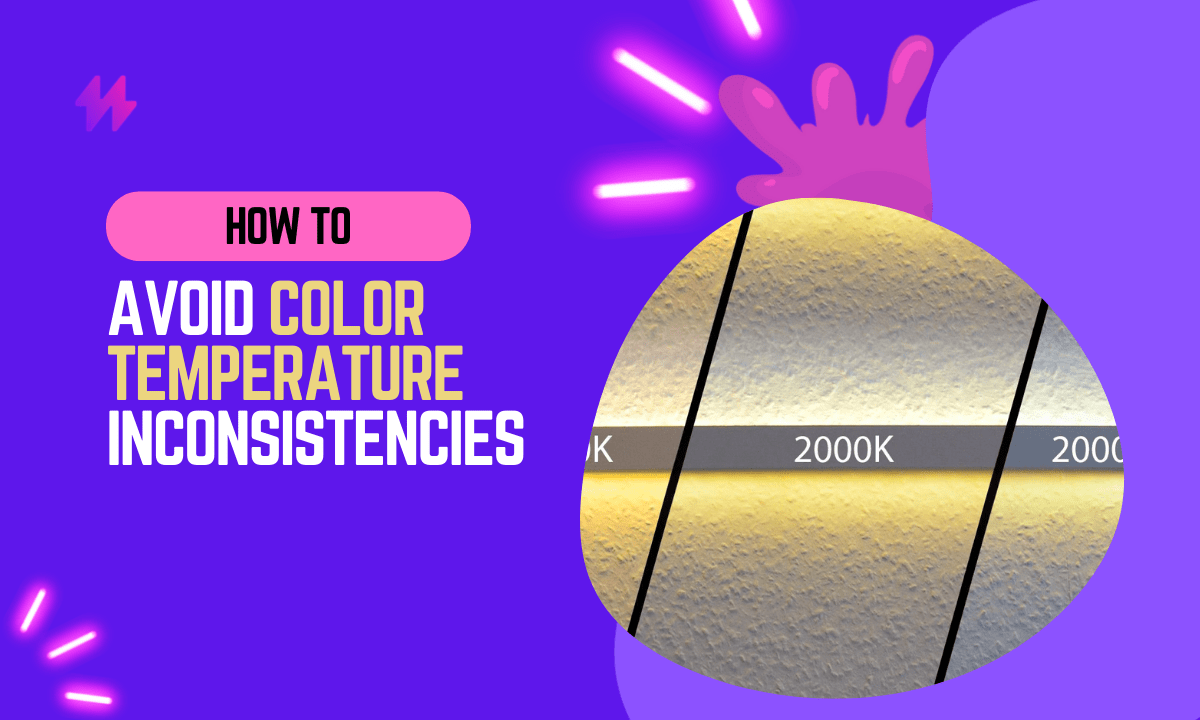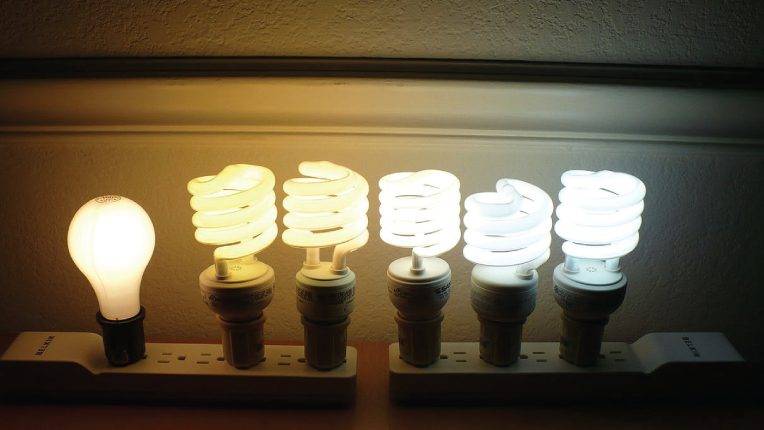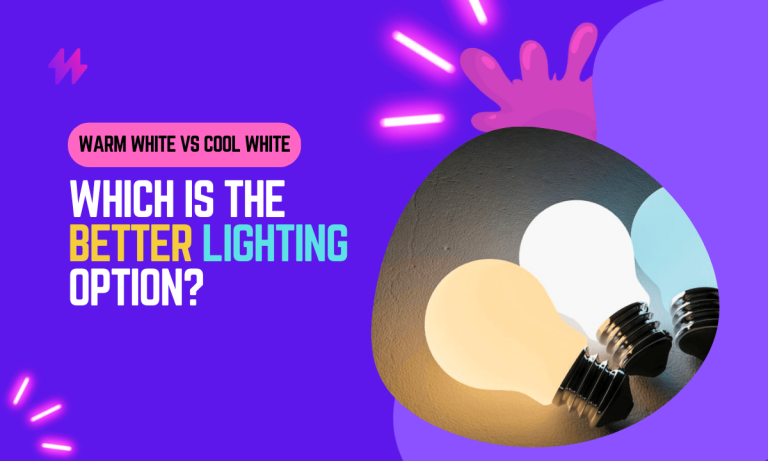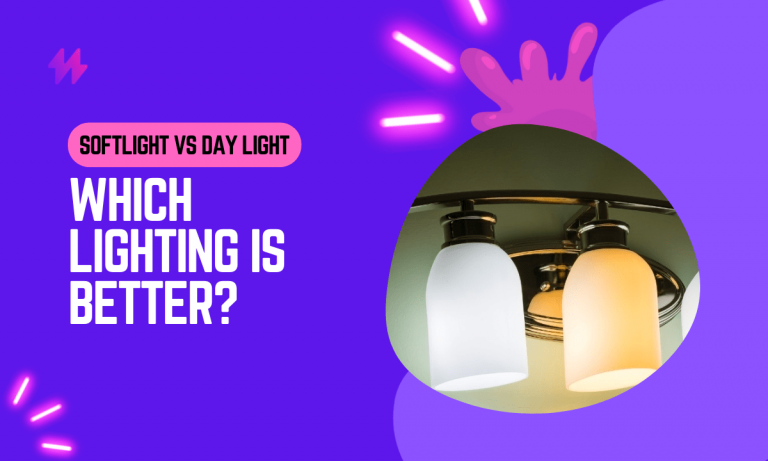How to Avoid Color Temperature Inconsistencies of LED lights

It’s no secret that LED lights are becoming more and more popular by the day. They’ve quickly replaced incandescent light bulbs as the go-to choice for a variety of reasons – they’re more energy efficient, longer lasting, and emit less heat.
One thing that often surprises people about LED lights is how different colors can look when emitted from the same LED lights. This inconsistency in color temperature is due to a number of factors, but can often be resolved through proper calibration. In this blog post, we’ll discuss what causes inconsistencies in color temperature, how to avoid them, and some tips for calibrating your LED lights.
Causes of Color Temperature Inconsistencies:

There are many reasons why the color temperature of LED lights might be different. Some of the reasons are:
- The light might be coming from different parts of the LED. This can cause some colors to be brighter than other colors.
- Some LED lights might not be calibrated correctly. This means that they might not be set to the same brightness or color temperature as other LED lights. You can avoid these inconsistencies by making sure that your LED lights are calibrated correctly and by choosing LEDs from the same batch.
- The surrounding environment can also affect the color temperature of LED lights. For example, if there is a lot of ambient light in the room, this will cause your LED lights to appear brighter and cooler than usual. Similarly, if you are looking at the LEDs from an angle or through a screen, this can cause discoloration and inconsistencies in color temperature.
- Finally, some LEDs may use materials that change their light over time. This can cause changes in color temperature even without any interference from the surrounding environment.
How to Avoid Color Temperature Inconsistencies
In order to avoid color temperature inconsistencies with your LED lights, it’s important to take these factors into account and calibrate your LEDs accordingly.
One of the best ways to avoid color temperature inconsistencies with LED lights is to take a proactive approach and calibrate your LEDs regularly. This can be done by using specialized calibration tools or by working directly with an LED manufacturer to ensure that your LEDs are properly calibrated to the same standards.
Another important step you can take is to choose quality LED lights from reputable manufacturers. Avoid buying low-quality, off-brand LEDs that may not have been thoroughly tested or calibrated. By choosing well-made, high-quality LEDs from a trusted source, you can minimize the risk of inconsistencies in color temperature.
Finally, it’s important to consider your surrounding environment when using LED lights. Avoid exposing your LEDs to other sources of light or glare from screens, and make sure that they are not being viewed from an angle or through a screen. These simple steps can help you ensure that your LED lights are emitting consistent, high-quality light for years to come.
You may also like: 3000K vs 4000K Color Temperature Difference
Tips for Calibrating LED lights
When calibrating LED lights, it’s important to use specialized tools and techniques that are designed specifically for LED lights. Some tips for calibrating LEDs include:
1. Avoid exposing your LEDs to other sources of light, as this can affect their color temperature.
2. Make sure that you are working with high-quality LEDs from reputable manufacturers, as these will be more consistently calibrated and easier to adjust if necessary. They will be able to provide specialized knowledge and guidance that can help you achieve optimal results with your LED lights.
3. Consider the surrounding environment when using your LEDs – try to keep them in a dark space or shield them from ambient light whenever possible.
4. When adjusting the brightness or color temperature of your LEDs, start by making small changes and taking measurements at each stage so that you can quickly identify and fix any problems.
Also read: 4000K vs 5000K, which Color Temperature is Best for Home Lighting
Final Words
In conclusion, managing and avoiding color temperature inconsistencies in LED lighting is crucial for achieving a harmonious and aesthetically pleasing lighting environment. Such inconsistencies can detract from the visual comfort of a space and may impact mood and functionality, depending on the setting. To ensure uniformity in LED lighting, it is essential to purchase LEDs from reputable manufacturers who provide detailed and accurate specifications about color temperature and color rendering index (CRI). It is also advisable to buy all the needed LED lights at once to avoid variations that can occur with different manufacturing batches. Ensuring that all LEDs used in a particular space are of the same color temperature is a key step in maintaining consistency.
Moreover, employing advanced lighting control systems that allow for fine-tuning and adjustments can help mitigate any minor inconsistencies that may arise over time or from unit to unit. These systems can adjust the output and color temperature dynamically to compensate for variations and ensure a consistent appearance across all fixtures. Regular maintenance checks and the recalibration of lighting systems also play a vital role in preserving the consistency of LED lights. By implementing these strategies, users can enjoy the full benefits of LED lighting technology, enhancing both the functionality and aesthetic appeal of their environments with reliable, consistent lighting solutions.






